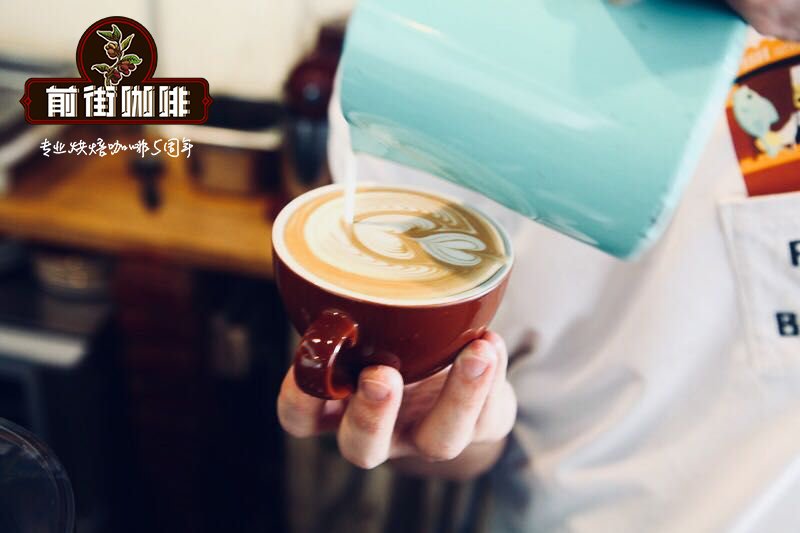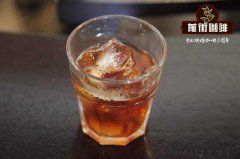What tools do I need to prepare for the cup test? What is the ratio of powder to water? What are the steps?

Professional coffee knowledge exchange more coffee bean information please follow the coffee workshop (Wechat official account cafe_style)
What tools do you need to prepare for cup testing? What is the ratio of powder to water in the cup? What are the steps?
"before raw coffee beans are sent to all parts of the world, cup tests will be carried out by coffee farmers' associations or refining factories in the producing areas, that is, they will try to confirm the aroma and taste of beans, judge the flavor and taste of coffee by cup tests, and monitor the quality of a type of coffee. it's a very scientific method. "
Since it is a scientific method, there is a standard system process to carry out. At present, the two cup test records in the coffee industry are SCAA (Specialty Coffee Association of America, American Fine Coffee Association) and COE, of which SCAA is more common. This time, let's share the preparation homework for the SCAA Cup of Standards Test.
1. Preparation tools are required for cup testing:
Samples of raw beans and their cooked beans
Spectrum analyzer
Bean grinder
Glass / or porcelain bowl (cup test container, the instrument used in the same cup test should be of the same material, and the common ones are 5oz or 6oz Manhattan Glass or Rock Glass. For white porcelain cups, the recommended capacity is between 175and 225ml)
Cup meter (but don't forget the pen)
Empty bowl (spitting coffee liquid)
Spoon (one person will need two spoons)
Electric Kettle
two。 Basic requirements for cup testing environment:
Cup test table (necessary)
Clean, quiet, no other aroma interference (the editor believes that participants in the cup tester should not wear perfume themselves, less likely to interfere with judgment. Of course, those who have confidence in their own sense of taste and smell are another matter.)
Bake (prepare cup test sample)
The cooked beans should be finished within 8-24 hours before the cup test, and the cooked beans should be kept for at least 8 hours.
Baking degree: according to the standard value of M-Basic (Gourmet) Agtron, the baking degree is from light baking to light baking, the bean value is 58, the powder value 63 is Agtron color card scale is
Baking time: more than 8 minutes ~ 12 minutes, no scorching and peeling
Cooked beans should be cooled by air immediately, not by water cooling.
When the sample bean temperature drops to room temperature (about 20 degrees), put it in a sealed container or airtight bag until you start the cup test to reduce contact with air and prevent contamination.
Sample beans should be kept in the shade temporarily, but do not need to be frozen or refrigerated.
Coffee quantity:
Coffee: 150ml water. It conforms to the best brewing ratio of Golden Cup. However, the proportion of coffee powder can be adjusted according to the glass capacity used in the cup test, and the difference is about plus or minus 0.25 grams.
5. Water injection:
Grind the sample beans before the cup test, and complete the water injection within 15 minutes after grinding. Do not soak coffee powder for more than 30 minutes after injecting water.
According to the coffee proportion mentioned above, the proportion of water is adjusted according to the weight of coffee beans (not ground coffee powder).
Coffee beans are ground more finely than filter paper (for example, they are usually ground into ordinary granulated sugar particles, and that cup test is about fine granulated sugar particles), which means that the mesh size of 20Mesh in the United States can pass about 70mm 75% as the standard. In order to make the test more accurate, prepare 5 cups of each sample bean tested in the cup
On water quality:
It is recommended that the water used should not have fragrance or distilled water or soft water. The ideal total solubility (TDS) of water quality is in 125~175ppm, but not less than 100ppm, nor more than 250ppm (too low TDs means excessive extraction rate, and too high TDS means insufficient extraction). The brewing temperature is 93 degrees. Wait 3 to 5 minutes after water injection before starting the cup test.
Above. The main purpose of doing so many standardized processes is to control the variables that affect the flavor, so that the flavor and taste of coffee beans can be judged more accurately through quantification (scoring). Cup testers can clearly point out the differences in flavor among different samples, which can be used as a reference for monitoring the quality of coffee beans.
Important Notice :
前街咖啡 FrontStreet Coffee has moved to new addredd:
FrontStreet Coffee Address: 315,Donghua East Road,GuangZhou
Tel:020 38364473
- Prev

Is Guatemalan coffee the best? Is there fair trade certification for Antigua coffee in Guatemala?
Professional coffee knowledge exchange more coffee bean information please follow Coffee Workshop (Wechat official account cafe_style) Guatemala, the cradle of top coffee in Guatemala with extended mountains and great microclimate changes, in recent years, driven by national efforts to promote the development of coffee industry, both quality and planting methods have been greatly improved and changed, becoming an international top coffee supplier.
- Next

What is the flavor wheel? What's the idea? What is the difference and function between new and old flavor wheels?
Professional coffee knowledge exchange more coffee bean information please follow the coffee workshop (Wechat official account cafe_style) what is the flavor wheel? What's the idea? What is the difference and function between new and old flavor wheels? The symbol of the boutique coffee industry, the American Fine Coffee Association (SCAA), designed the coffee flavor wheel (Coffee Tasters Flavor Wheel), which was completed at the beginning of this year.
Related
- Detailed explanation of Jadeite planting Land in Panamanian Jadeite Manor introduction to the grading system of Jadeite competitive bidding, Red bid, Green bid and Rose Summer
- Story of Coffee planting in Brenka region of Costa Rica Stonehenge Manor anaerobic heavy honey treatment of flavor mouth
- What's on the barrel of Blue Mountain Coffee beans?
- Can American coffee also pull flowers? How to use hot American style to pull out a good-looking pattern?
- Can you make a cold extract with coffee beans? What is the right proportion for cold-extracted coffee formula?
- Indonesian PWN Gold Mandrine Coffee Origin Features Flavor How to Chong? Mandolin coffee is American.
- A brief introduction to the flavor characteristics of Brazilian yellow bourbon coffee beans
- What is the effect of different water quality on the flavor of cold-extracted coffee? What kind of water is best for brewing coffee?
- Why do you think of Rose Summer whenever you mention Panamanian coffee?
- Introduction to the characteristics of authentic blue mountain coffee bean producing areas? What is the CIB Coffee Authority in Jamaica?

